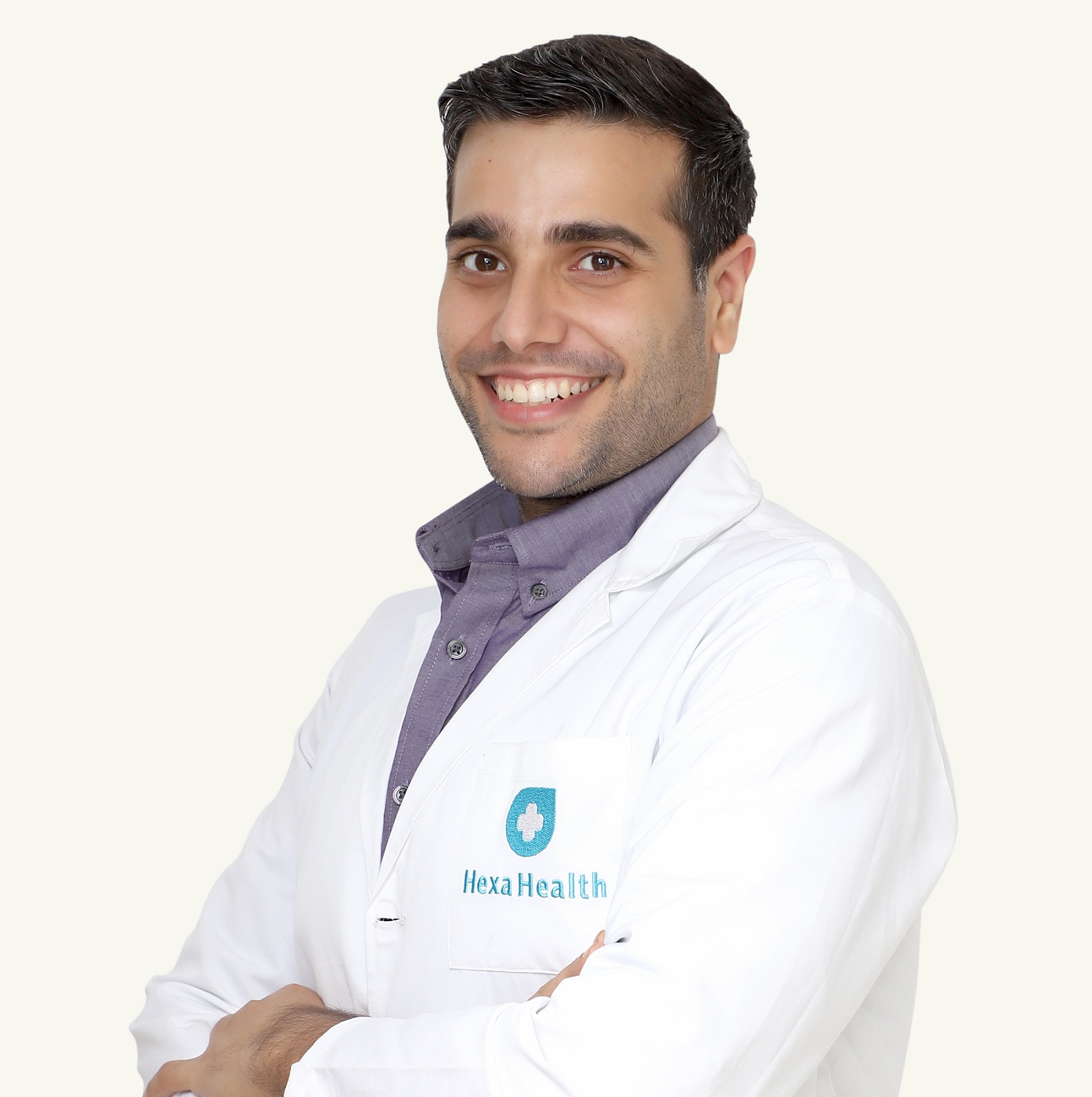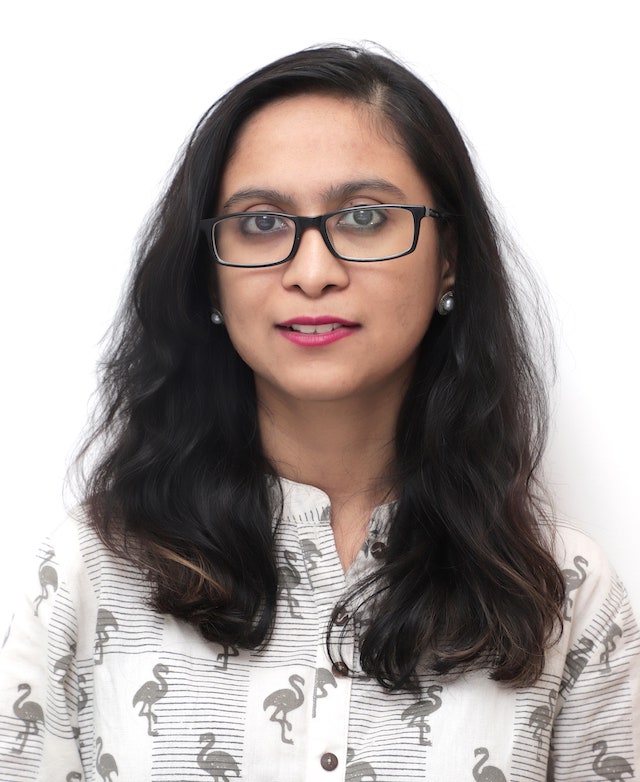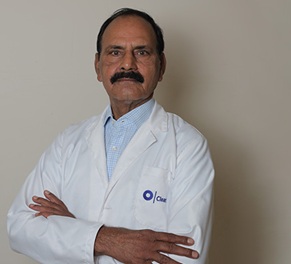Sclerotherapy - Treatment for Varicose and Spider Veins
Dr. Aman Priya Khanna

Treatment Duration
1 Hours
------ To ------1.5 Hours
Treatment Cost
₹ 40,000
------ To ------₹ 1,00,000

Table of Contents
According to a study by Ann Med Surg (Lond) et al., 2016, varicose veins are more prevalent in people aged between 41 and 50 years. This can be due to the weakening of vein walls or prolonged sitting or standing. To treat this disease, procedures like foam sclerotherapy for varicose veins have shown to be an effective treatment option.
But how does the sclerotherapy procedure work? What are the costs involved? Read below to know about the procedure, its benefits and the cost.
Procedure Name | Sclerotherapy for varicose veins |
Alternative Name | Injection of varicose veins, Injection sclerotherapy |
Conditions Treated | Varicose veins, spider veins |
Benefits of Procedure | Minimally invasive, Cosmetic enhancement |
Treated By | Vascular surgeon |
You can check Sclerotherapy for Varicose Veins Cost here.
What is Sclerotherapy for Varicose Veins?
Sclerotherapy is a procedure used to treat enlarged, twisted veins that commonly appear on the legs. A special varicose veins solution is injected directly into the affected veins. This swells the lining of the vein, causing it to break and shut the blood flow. There are two ways to perform the procedure:
Foam Sclerotherapy: This involves mixing a sclerosing agent with air or gas to create a foam-like solution. It can cover a larger area within the vein, making it effective for treating larger affected vessels.
Liquid Sclerosing Therapy: It uses a fluid sclerosing agent injected directly into the vein. It is used for smaller varicose or spider veins because the liquid can more easily penetrate and close off the affected vessels.
Sclerotherapy for Varicose Veins Videos by HexaHealth
Expert Doctors (10)
NABH Accredited Hospitals (10)


Who needs Sclerotherapy for Varicose Veins?
Varicose veins sclerotherapy is recommended for individuals who experience discomfort or are dissatisfied with the appearance of their legs. This procedure may be suitable for:
Those with visible, bulging veins
Patients diagnosed with venous insufficiency (poor leg circulation)
Individuals experiencing symptoms such as pain, swelling, or heaviness in the legs
Patients seeking cosmetic improvement
Conditions Treated with Sclerotherapy for Varicose Veins
Sclerotherapy is one of the best treatments for varicose veins as it effectively addresses venous conditions, relieving discomfort. It helps to improve the appearance of the affected area. Common conditions treated include:
Varicose Veins: Enlarged, twisted blood vessels often appear blue or purple on the legs.
Spider Veins: Smaller, web-like veins that can be red, blue, or purple and are commonly found on the legs.
Before and On the Day of Sclerotherapy
Certain preparations are necessary before and on the day of foam sclerotherapy to ensure the procedure's effectiveness and safety. The steps involved are mentioned below.
Before Surgery
Before undergoing sclerotherapy, patients undergo an evaluation by a medical team of vascular specialists or interventional radiologists. This ensures that the procedure is necessary and safe:
Parameter | Pre-Requisites |
Pre-op Assessment |
|
Risk Evaluation |
|
Fasting | Medication restrictions:
|
On the Day of Surgery
Specific guidelines should be followed to prepare for the procedure and ensure a smooth experience. These steps are crucial in optimising the outcome:
Parameter | Pre-requisites |
Consent | Mandatory |
Surgical Preparation | Cleaning and sterilising the skin |
Physical Evaluation | Checking for vital signs, like blood pressure and temperature |
Sclerotherapy Procedure
Liquid or foam sclerotherapy is a minimally invasive procedure performed without anaesthesia. One session of sclerotherapy takes 30-45 minutes, depending on severity. Below are the steps of the procedure:
Preparation: The skin is cleansed, and the targeted veins are identified.
Injection: A fine needle injects the sclerosing agent into the affected vessels. The sclerosant causes the vein to swell and eventually close off. As the vein closes, blood is rerouted through healthier veins, improving circulation.
Compression: Stockings or bandages are applied to the treated leg to help compress the veins.
After Surgery and Recovery
After your treatment, the doctor may ask you to lie down for 15 minutes to ensure you do not have adverse reactions to the injected substance.
You'll be able to do your usual activities, especially walking. To compress the treated vessels, it's advisable to wear support stockings or compression wraps for three to seven days after treatment.
The Recovery Process in Hospital
During the patient’s time in the hospital, various measures will be taken to promote healing and minimise potential complications.
Observation and monitoring of the treated site by medical staff
Compression therapy to aid in healing
Recovery Process/Expectation After Hospital Discharge
For the initial 48 hours following your procedure, adhere to the recommendations by the doctor. They can advise the following:
Wearing compression stalkings or bandages for at least two weeks
Do not shave or put lotion on the injected site until it heals
Avoid exposure to the sun for two weeks or use sunscreen with a minimum of 30 SPF
First Follow-Up Appointment
The first follow-up appointment after the sclerotherapy procedure is essential for assessing the progress and ensuring the recovery is on track. During this visit, one may expect the following:
Assessment of treatment outcomes
Discussion of any lingering symptoms or concerns
Guidance on long-term care and maintenance
Benefits of Sclerotherapy
Sclerotherapy is known to be the best treatment for varicose veins as it offers a range of benefits. This procedure assists in effectively improving overall vein health. The key advantages are:
Cosmetic Enhancement: Sclerotherapy diminishes the appearance of varicose veins, restoring smoother, clearer skin.
Minimally Invasive: It requires no anaesthesia and requires no downtime. This allows patients to resume their daily activities shortly after treatment.
Improved Circulation: This method redirects blood flow to healthier veins by closing off damaged veins, improving overall circulation.
Risks and Complications of Sclerotherapy
Sclerotherapy removes affected veins in 75% to 90% of cases. However, it's essential to be aware of potential risks. The major complications include:
Allergic reactions to the sclerosant solution
Hyperpigmentation at the injection site
Formation of blood clots in treated veins
Ulceration or tissue damage
When to Consult a Doctor?
Consulting a doctor promptly can help address issues before they escalate. The instances when it's essential to visit a medical professional are:
Severe pain or discomfort at the injection site
Excessive swelling or inflammation
Persistent skin changes, such as ulceration or discolouration
Any signs of allergic reactions, such as rash or difficulty breathing
Risks of Delaying Sclerotherapy
Varicose veins can worsen over time and negatively impact daily activities and quality of life. Delaying it can also reduce the efficacy of therapies like sclerotherapy. Other risks involved are as follows:
Increased discomfort, swelling, and pain in the affected area
Progression of varicose veins, leading to larger, more pronounced bulges
Higher risk of developing complications such as blood clots or skin ulcers
Sclerotherapy Cost
The sclerotherapy cost can differ due to various factors, such as the severity of the condition and the number of sessions required. The estimated cost range is given below.
Treatment | Estimated Cost Range |
Sclerotherapy for Varicose Veins | ₹ 40,000 to ₹ 1,00,000 |
Note: The price range mentioned above is subject to change. Please contact HexaHealth to get up-to-date information.
Factors that may affect the cost of sclerotherapy for varicose veins include:
Geographic Location: The expenses can vary significantly depending on the city where the procedure is performed. Centres in urban areas may be more expensive.
Doctor's Fees: Providers with a strong reputation and extensive knowledge may charge more for their services.
Insurance Coverage: Some policies cover the procedure for medical reasons but not for cosmetic purposes. Therefore, one may expect out-of-pocket expenses.
Takeaway
Liquid or foam sclerotherapy for varicose veins emerges as a promising solution for individuals struggling with this condition. It effectively targets and treats enlarged veins, offering patients improved comfort and enhanced aesthetics.
For those considering varicose veins sclerotherapy, HexaHealth provides top-tier assistance. Our network of skilled doctors provides comprehensive evaluations and personalised treatment plans. Get in touch!
Frequently Asked Questions (FAQ)
What is sclerotherapy?
Sclerotherapy is a minimally invasive medical procedure for treating varicose and spider veins. It improves the appearance of the legs and alleviates symptoms.
How does sclerotherapy work?
Sclerotherapy works by injecting a special solution directly into varicose or spider veins. This causes them to collapse and eventually fade away. It redirects blood flow to healthier vessels, improving circulation and relieving symptoms.
What are varicose veins and spider veins?
Varicose veins are enlarged, twisted veins that appear blue or purple and are often found in the legs. Weakened valves and increased pressure cause them. In contrast, Spider veins are smaller and web-like, varying in colour from red to blue. These result from dilated blood vessels near the surface of the skin.
Can sclerotherapy treat both varicose and spider veins?
Yes, sclerotherapy can effectively treat varicose and spider veins by injecting a sclerosing agent directly into the affected vessels. It promotes improved aesthetics and overall vein health.
What are the benefits of sclerotherapy for varicose veins?
Sclerotherapy offers numerous advantages for individuals with varicose veins, providing effective relief. The key benefits are:
Minimally invasive procedure
Reduced pain and discomfort
Improved appearance of varicose veins
Quick recovery time
How much does sclerotherapy cost on average?
The sclerotherapy costs range between ₹ 40,000 to ₹ 1,00,000, with the average price being ₹ 60,000. Please note that these numbers are estimates. Contact HexaHealth experts for precise information.
What are the risks and side effects associated with sclerotherapy?
Sclerotherapy, while generally safe, carries certain risks and potential side effects. These include:
Allergic reactions to the sclerosant solution.
Skin discolouration or hyperpigmentation at the injection site.
Formation of blood clots in treated veins.
Ulceration or tissue damage.
How many sessions of sclerotherapy are needed for spider veins?
The number of sclerotherapy sessions required for spider veins ranges from 2 to 4 sessions, spaced several weeks apart. The exact number depends on factors such as the severity of the spider veins.
Is sclerotherapy painful?
Sclerotherapy may cause some mild burning sensation during the injection of the sclerosant solution. However, many individuals tolerate the procedure well, and discomfort is temporary.
Can sclerotherapy be used on all types of veins?
Yes, sclerotherapy can treat various types of veins, including small and large ones. However, its effectiveness may vary depending on the size and location of the treated veins.
Are there any lifestyle changes or precautions to take after sclerotherapy?
After undergoing sclerotherapy, certain lifestyle changes and precautions can support optimal healing and outcomes. The key considerations are as follows:
Avoid prolonged sitting or standing.
Stay hydrated and maintain a healthy weight.
Engage in regular physical activity, such as walking or swimming.
Wear compression stockings as recommended.
How long do the results of sclerotherapy last?
Many patients experience long-term improvement after sclerotherapy. Usually, they don't need additional treatment unless new varicose veins develop over time.
Is sclerotherapy a permanent solution for varicose veins?
Sclerotherapy can effectively reduce the appearance and symptoms of existing varicose veins, but it may not always provide a permanent solution. While many patients experience long-term improvement, new bulges may develop over time.
What is the cost of sclerotherapy treatment for varicose and spider veins?
Sclerotherapy can cost anywhere between ₹ 40,000 to ₹ 1,00,000. Note that all of these figures are estimates. For the exact details, speak with HexaHealth professionals.
Can sclerotherapy be combined with other vein treatments for better results?
Yes, sclerotherapy can be combined with other vein treatments like percutaneous vein ablation to achieve results, particularly for severe cases. Combining with therapies like endovenous laser treatment may offer enhanced efficacy.
What are the differences between sclerotherapy and laser therapy for veins?
Sclerotherapy involves injecting a solution into the veins to collapse them. On the other hand, laser therapy uses heat energy to seal off veins from the inside.
Does insurance cover sclerotherapy, and what factors determine coverage?
Sclerotherapy for varicose veins is an elective cosmetic procedure, so it is not usually covered by insurance. However, the company may cover it if the procedure is medically necessary to alleviate pain or prevent complications. Contact HexaHealth experts to understand the specific details.
Which is the best treatment for varicose veins?
The best treatment for varicose veins depends on individual factors such as the severity of the condition and the vein size. Vascular specialists determine the most suitable treatment based on individual assessment. Options include minimally invasive procedures like liquid or foam sclerotherapy.
Does sclerotherapy remove varicose veins?
Sclerotherapy effectively treats varicose veins by causing them to collapse and fade over time. However, a doctor can recommend up to 3 to 5 sessions to achieve optimal results.
Do veins grow back after sclerotherapy?
The recurrence rate of varicose veins after sclerotherapy is 30.5% after one year. However, undergoing all the sessions prescribed by a doctor, according to the specific condition, can reduce the likelihood of regrowth.
Sclerotherapy for Varicose Veins Cost Videos
More Treatment options
References
All the articles on HexaHealth are supported by verified medically-recognized sources such as; peer-reviewed academic research papers, research institutions, and medical journals. Our medical reviewers also check references of the articles to prioritize accuracy and relevance. Refer to our detailed editorial policy for more information.
- Joseph N, B A, Faizan Thouseef M, Devi M U, Abna A, Juneja I. A multicenter review of epidemiology and management of varicose veins for national guidance. Annals of Medicine and Surgery. 2016 Jun;8:21–7.

- Simion @Yonescat F. Varicose Veins - Injection Treatment or Sclerotherapy [Internet]. Circulation Foundation. [cited 2024 Apr 18].

- Gibson KD, Ferris BL, Pepper D. Foam Sclerotherapy for the Treatment of Superficial Venous Insufficiency. Surgical Clinics of North America. 2007 Oct;87(5):1285–95.

- Sclerotherapy: Treatment for Varicose and Spider Veins [Internet]. Cleveland Clinic. [cited 2024 Apr 18].

- The Benefits of Sclerotherapy [Internet]. Vein Institute.

- Foam sclerotherapy for varicose veins [Internet]. Gloucestershire Hospitals NHS Foundation Trust. [cited 2024 Apr 18].

- Bootun R, Burrows M, Chowdhury MM, Stather PW, Al-Jundi W. The risk of harm whilst waiting for varicose veins procedure. Phlebology: The Journal of Venous Disease. 2022 Nov 28;026835552211418.

- Sclerotherapy for Varicose Veins Cost in India - Calculate Estimated Cost [Internet]. www.hexahealth.com. [cited 2024 Apr 18].

- Are there risks associated with having multiple sclerotherapy sessions, or is there a limited number of treatments a person should have on both legs? - Sclerotherapy Questions & Answers | VeinDirectory.org [Internet]. www.veindirectory.org. [cited 2024 Apr 18].

- Sclerotherapy: What does it treat, cost, aftercare, and results [Internet]. www.medicalnewstoday.com. 2017 [cited 2024 Apr 18].

- Badri H, Bhattacharya V. A Review of Current Treatment Strategies for Varicose Veins. Recent Patents on Cardiovascular Drug Discovery. 2008 Jun 1;3(2):126–36.

Last Updated on: 4 July 2024
Reviewer

Dr. Aman Priya Khanna
MBBS, DNB General Surgery, Fellowship in Minimal Access Surgery, FIAGES
14 Years Experience
Dr Aman Priya Khanna is a well-known General Surgeon, Proctologist and Bariatric Surgeon currently associated with HealthFort Clinic, Health First Multispecialty Clinic in Delhi. He has 14 years of experience in General Surgery, Proctolo...View More
Author

She has extensive experience in content and regulatory writing with reputed organisations like Sun Pharmaceuticals and Innodata. Skilled in SEO and passionate about creating informative and engaging medical conten...View More


























